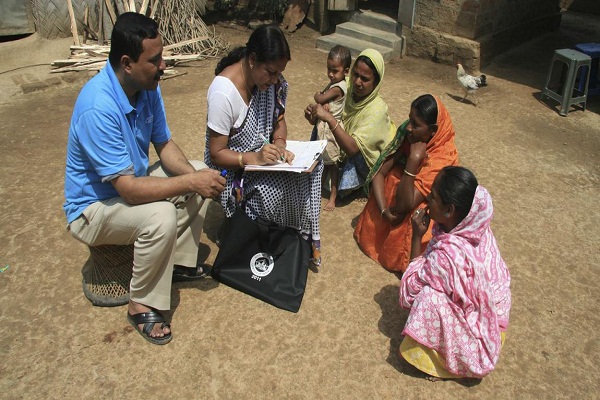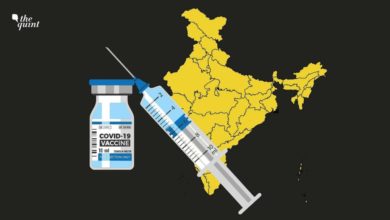5th Round of NFHS: More women than men for the first time

On November 24, the Union health ministry released National Family Health Survey (NFHS-5) findings for India, including 14 phase-II states and union territories. The survey features crucial indicators on population, family welfare, reproductive and child health, nutrition, and other health-related topics. According to NFHS-5 statistics for 2019-21, India has more females than males. The number of women in India has overtaken the number of males for the first time, with a sex ratio of 1020:1000, indicating a demographic transition. In addition, the sex ratio at birth rose to 929 in 2019-20 from 919 in 2015-16, demonstrating that efforts such as the PC and PNDT Act and other initiatives had a favourable impact. The sex ratio was 1000:1000 in NFHS-3, conducted in 2005-06, and 991:1000 in NHFS-4, 2015-16.
“With this, we can say India has entered the league of developed countries — as the sex ratio has crossed 1,000”, according to an official. According to the survey, the total fertility rate has attained the replacement level of fertility. Efforts targeted at empowering women, like financial inclusion and addressing gender discrimination and injustices, are credited with the progress. The fertility rate is 2.0 children per woman in NFHS-5 from 2.2 in NFHS-4. It means fewer births presently during the reproductive period than in the past. According to the ministry official, “ this also indicates better knowledge and use of family planning services, late entry into marriage/union, and so on.”
Source – EletsTechnomedia Pvt Ltd
According to the NFHS-5, most of the states and union territories had more women than men. Maharashtra, Arunachal Pradesh, Gujarat, Madhya Pradesh, Haryana, Punjab, and UTs such as Chandigarh, Andaman and Nicobar Islands, Ladakh, Jammu and Kashmir, Dadra and Nagar Haveli, and Delhi, had fewer women than men. However, all of these states and UTs saw an increase in female population growth.Kerala has the highest sex ratio of 1121 in NFHS-5 from 1049 in NFHS-4. Kerala Total Fertility Rate, on the other hand, has risen to 1.8 from 1.6.
The NFHS data state-wise breakup reveals that India is on the verge of population stabilization, with most States and UTs having a Total Fertility Rate of less than two. Only six states have a TFR greater than two: Uttar Pradesh, Bihar, Jharkhand, Meghalaya, and Manipur. The TFR for Bihar is three, which is an improvement above the NFHS-4 ( 3.4).A TFR of less than 2.1; means that a woman has two children on average over her lifetime. A number less than two indicates a population reduction over time and can result in a replacement. The TFR in all States has improved in the last five years, much like the overall trend toward feminization.
Source – The Hindu
The NFHS-5 survey was conducted in around 6.1 lakh sample households across 707 districts, covering 724,115 women and 101,839 men. The NFHS-5 report itself has recommended caution.” Readers should use caution when interpreting and comparing trends because some states and Union territories may have a smaller sample size,” the report said. According to Nand Lal Mishra, a research fellow at the International Institute of Population Sciences in Mumbai- The overestimation of the sex ratio in NFHS-5 was attributable to two key issues. First, the sex ratio in the factsheet was estimated using de facto enumeration, which refers to the number of males and females present in the household on the last night of the survey. The second cause, according to Mishra, was a considerable improvement in the sex ratio in these 30 years.
According to the NFHS-5, 88.6% of the total childbirths in the country were institutional. Officials say that a significant increase from NFHS-4 (78.9%) shows that India is on its way to achieving universal institutional births. Birth registration for children under the age of five has increased from 79.7% (2015-16) to 89.1% (2019-2021). The unfulfilled need for family planning for presently married women aged 15-49 has reduced to 9.4 % in NFHS-5 from 12.9 % in NFHS-4.
Furthermore, according to NFHS-5, two-thirds (66.7%) of presently married women aged 15-49 are using measures for family planning to delay or limit pregnancies, compared to only 53.5 % in NFHS-4. It is a big increase from the previous round. Contraception reduces pregnancy-related health hazards for women, particularly adolescent girls, and appropriately timed birth intervals to reduce the infant mortality rate.
Source – ndtv.com
India is still on track to become the most populous country in the world. The United Nations Population Division projected that the population of India will peak between 1.6 to 1.8 billion people during 2040 – 2050. According to a government assessment released last year, India would replace China as the most populous country in 2031, nearly a decade later than the UN projection of 2022.
Written by- Riya Kashyap
Edited by- Aditi Agarwal
The post 5th Round of NFHS: More women than men for the first time appeared first on The Economic Transcript.





